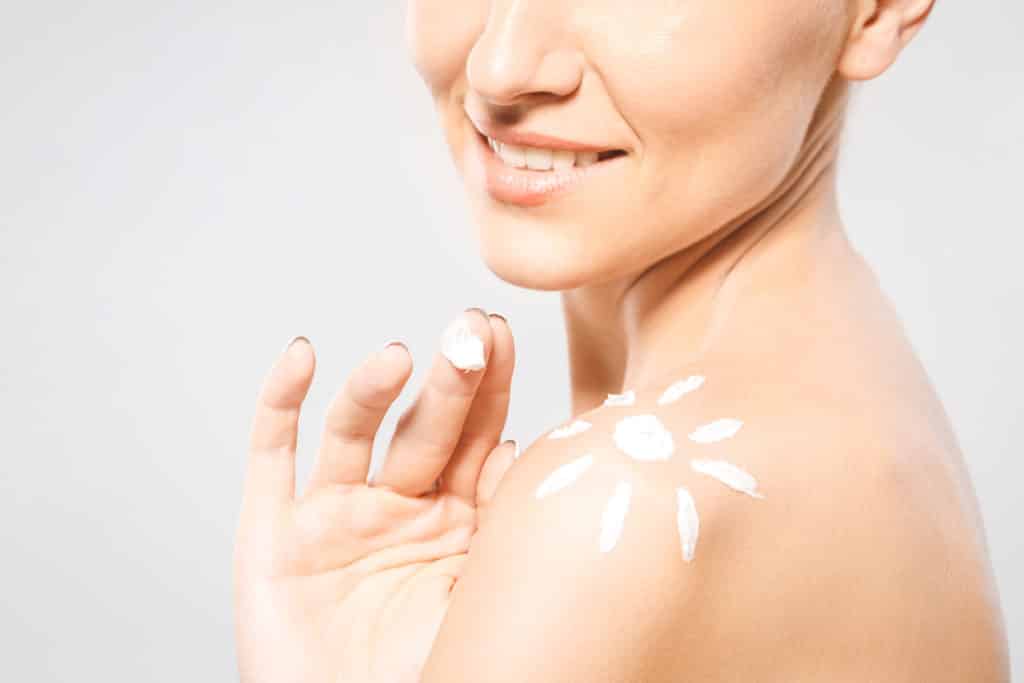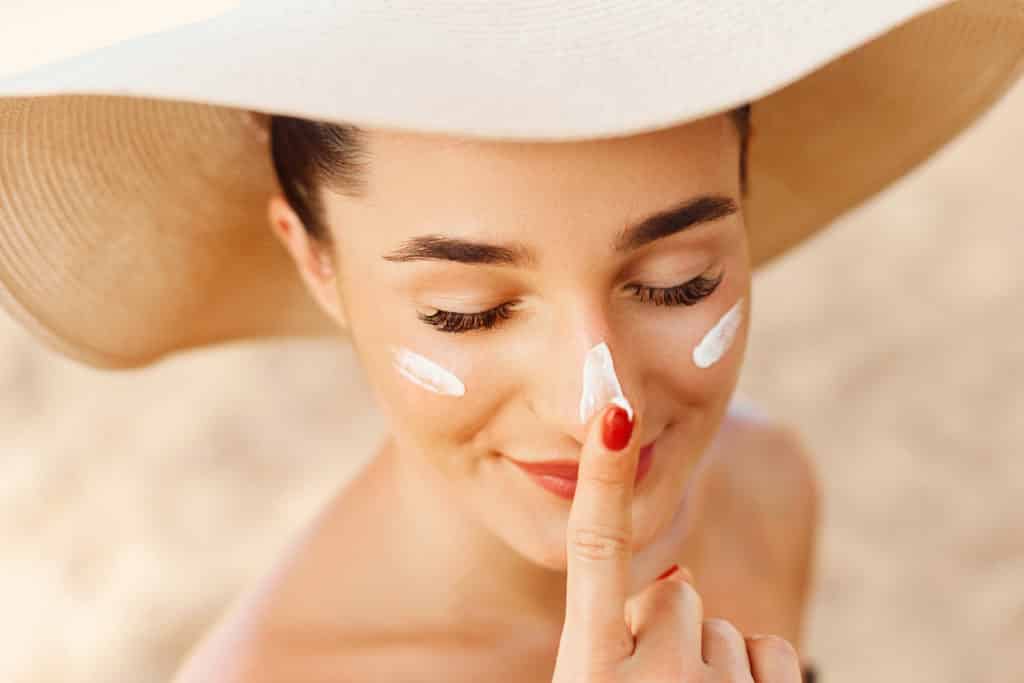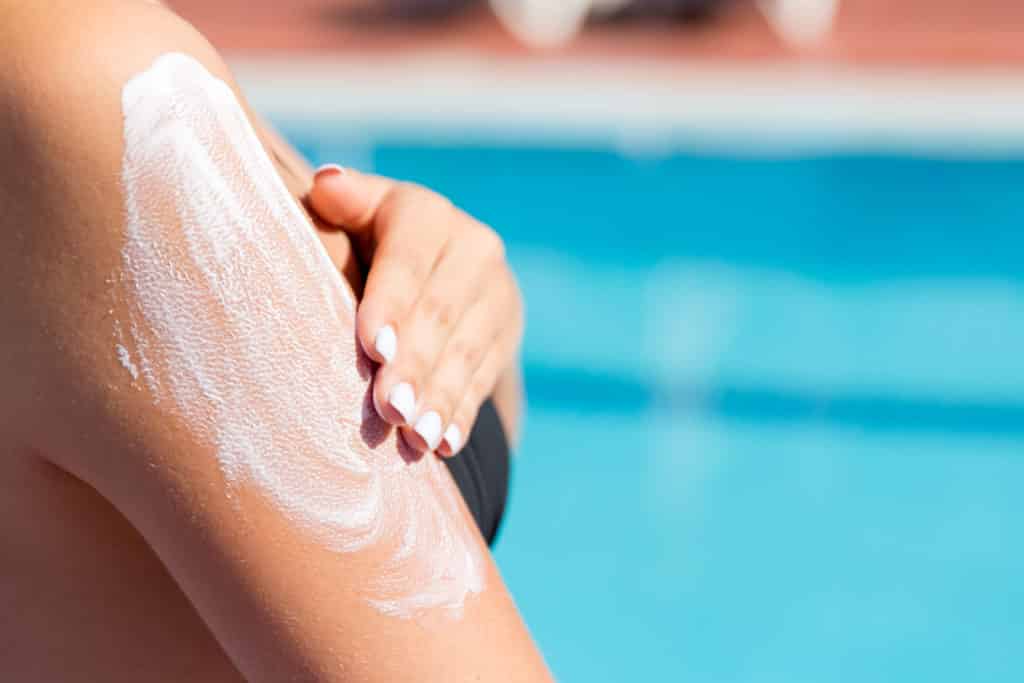When To Apply Sunscreen
Does your sensitive skin fear a cruel, cruel summer? Are you feelin hot hot hot? If you want to enjoy a summer breeze that makes you feel fine, and not worry about a full-body burn, then have that sunscreen handy! And don’t forget your other best buddies that help you deal with the summer sun: your big hat (sure, some may wonder if you’re on your way to the Kentucky Derby, but what’s wrong with a little air of mystery?), stylish sunglasses (to match your giant hat), and plenty of water. Also, don’t forget to put some sunblock in your purse or beach bag, because too often a single application doesn’t quite cut it. There’s a whole host of reasons to put it on before you head out.

Of course, you may be well aware of the ABCs of SPF, but just as a reminder, SPF stands for sun protection factor and is an indication of how long you will be protected from the sun’s UVB rays (ultraviolet B), which are the type of rays that cause sunburns and lead to the most common kinds of skin cancer. The SPF number represents how long the sun’s UV radiation will take to burn the skin versus how long it would take without wearing any. So, if you use SPF 30 as directed, it should take approximately 30 times longer for you to burn than if you had not applied any protection at all.
Bonus: 12 Ways To Take Care Of Your Skin And Look Naturally Flawless
There are other types of rays present in sunlight, like UVA, which are more numerous than UVB and penetrate more deeply, causing premature aging and wrinkling, in addition to the damage they do to the DNA in skin cells. When you see “broad-spectrum protection” listed on your label, this is to help protect against these UVA rays.
Perhaps you did not need anyone to tell you to use sunscreen, but just in case you were reluctant or forgetful, we hope this little PSA on SPF wasn’t TMI. In fact, we think it’s worth talking about when and why to apply enough sunscreen, as some people aren’t aware how much, how often, or how to work it into their regular beauty routine. Here are seven summertime suggestions for the whens, whys, and do I really have tos of applying sunscreen.
1. To moisturize before or after sunscreen? That is the question.
Should you apply moisturizer first? Unfortunately it’s not a super simple answer. There are a couple types that work in different ways. Mineral sunscreens (which generally include the active ingredients of zinc oxide and titanium dioxide) sit on the surface and act as a physical barrier that prevent UV rays from penetrating the skin. Chemical sunscreen (which have ingredients like oxybenzone, avobenzone, homosalate and octinoxate) create a reaction after the UV light is absorbed into the skin, in which the light is converted to heat and leaves the skin. Either way, harm to skin cells are reduced, as is the likelihood of a sunburn.
As for when to work your moisturizer into your multi-product mix, some dermatologists worry that people might apply their sunscreen immediately after moisturizer, not allowing either to be appropriately absorbed by the skin, or mixing the formulas so that they’re not as effective.
It’s important part of the process for chemical sunscreens to be fully absorbed so they can do their little science project with the sun and protect your skin efficiently. It might be best to avoid an overly thick or creamy moisturizer, since it could inhibit the absorption of ingredients in your sunscreen. But, you still need to keep your skin hydrated, so moisturizing first is fine. Your best bet is to allow a thin layer of moisturizer to fully soak in before smoothing on sunscreen. This is also good advice when using mineral sunscreen. Make sure any moisturizer is fully absorbed before powdering the mineral sunscreen on top. Since the mineral sunscreen acts as a deflective shield against sunshine, it’s got to be on top to fulfill its duty. Make it a daily ritual to protect exposed skin and you’ll reduce your risk of skin cancer.

2. SPF and moisturizer in one – it’s in there!
Just like that Prego spaghetti sauce commercial from the 80s, sometimes everything you need is already in there. While you shouldn’t experiment with your own mixing of moisturizers and sunscreens if you don’t know what you’re doing, there are several brands that have formulated effective sunscreens that do double duty as creams that care for your skin. That cuts out all of the guesswork about whether to apply your moisturizer or sunscreen first. Then, if you’d like to add another layer of sunscreen after that, you’re even better off. And then, when asked if you’re going to put on sunscreen, you can turn to that imaginary camera, point at your moisturizer with SPF, smile, and deliver your line: “It’s in there!”
See Related: 5 Tips To Moisturize Dry Lips in 2020 (and beyond)
3. Makeup with sunscreen – one and done!
If you’re looking for an easy out, there are more and more products available to you when it comes to makeup that contains sunscreen. Similar to the moisturizer with SPF option, using foundation with SPF also kills two birds with one stone, or – to borrow a more peaceful phrase from a friend – feed two birds with one seed (I mean, why are we talking about stoning birds? We should update our sayings every few centuries, right?) Anyway, however you say it, you are saving a little time as you protect your skin. If you would like to apply your regular moisturizer as well, just make sure you put it on and give it time to absorb before adding on a layer of your foundation with sunscreen.
You might want to take some with you if you plan to be out for long. There are even some foundation/sunscreen combos that come in handy compacts so you can reapply or touch up where needed when you’re on the go. It’s getting harder and harder to “forget” your sunscreen when there are so many products out there trying to help you literally save face.

4. Set it and forget it!
Perhaps you are perfectly content with your current regimen of moisturizer and cosmetics, and don’t want to mess with perfection. There are still options for you. You can close your eyes and spray sunscreen all over, though you might need to do more than just squint. You can always keep your sunglasses or goggles on that you’ll be wearing, so you don’t get that dreaded stinging sensation. Then you can remove and wash them before you put them back on.
Another option is to find a setting spray with SPF 15 or higher. If you’re just not that into the lotion or powder form, you can use a mist that doubles as a sunscreen and setting spray. Many of these mists also have other great ingredients for the skin, like hyaluronic acid or aloe vera extract. It’s a great choice for last minute sun protection as you step out the door.
5. Sunscreen. Full stop. Period. The end.
Let’s be honest, if you’re going out for a full day of beach fun or an all-day hike, much of your makeup will be sandblasted or salt-watered off your face so fast, you’ll wonder why you spent any time applying it at all. Save your full-face all-done-up look for when you’re lounging in the cabana or floating on a giant blow-up unicorn or flamingo. You know, those Instagrammable moments. Otherwise, don’t worry too much about your appearance. You’re gorgeous and glowing and glistening…or maybe that’s just good old-fashioned sweat! Maybe you won’t even feel the need to wear cosmetics since you’ll be free of wrinkles after keeping your skin protected.
Some people are less likely to put on more sunblock if they’re concerned with messing up their look. If that describes you, go ahead give yourself permission to go without any cosmetics everyonce in a while and just enjoy yourself like you did when you were little, running through the sprinklers naked. Or something like that.
Bonus: How To Make Homemade Makeup Primer
6. Reapply early and often
You may have heard that you need to apply sunscreen every two hours or so. This isn’t a bad idea, and it’s definitely better than never reapplying at all. However, at least one study has shown that most of us don’t apply enough of the stuff in the first place, and that reapplying soon after being outside leads to better outcomes. Specifically, reapplication of sunscreen after 20 minutes in the sun resulted in 60% to 80% of the ultraviolet exposure that would have occurred if the sunscreen were reapplied at the two hour mark. The recommendations are to liberally apply sunscreen 15 to 30 minutes before you will be in the sun, and then apply again within 30 minutes after sun exposure. In addition, you should reapply after swimming, or sweating excessively, or if you sense the sunscreen has been rubbed off in any way, even if it claims to be water resistant.
It may seem like more than you’re used to, or particularly cumbersome if you are the sunscreen queen – the one in charge of making sure everyone in the family is covered in sunscreen at all times. However, it’s better to be safe than sorry, and even more so when it comes to sunburns. Believe me, a little whining now is better than the whimpering (and peeling and potentially worse damage) later. Also, never underestimate the power of shade. Bringing umbrellas or a tent can save you some stress and give everyone a place to chill out and take a break from the sun. Kind of makes you wonder how the phrase “throwing shade” became a bad thing.

7. Apply it anytime you head outside, even if for “just a bit”.
Even if your plan is to go for a brisk afternoon walk, 15 minutes can turn into 30, which can turn into an hour. If you stop and smell the flowers (as you should!) or say howdy to a neighbor, it’s easy for time to get away from you. Just in case you decide to dilly dally, you might as well apply some sunscreen, even if you’re going for a walk around the block. The afternoon hours have the harshest and most direct sunlight, so stay inside if you have super sensitive skin, or be prepared and spread on that sunscreen.
So Hot Right Now: 25 Beauty Tips For Teenage Girls To Look Flawless
Long gone are the days when we didn’t know about the dangers of extended exposure, and we oiled ourselves up to sizzle like bacon in the sun for hours (maybe even with a little hydrogen peroxide in our hair). Or rather, those days should be long gone, but some sun seekers carry on just the same. At least we tried to spread some sun safety skills and awareness. We’ll leave it up to you to choose what works best for your skin and your schedule.
It’s important to treat your skin with a little respect, but of course we all have lapses in judgement and we’ve all been burnt (again, literally) by some of those decisions. And there are always those spots that we thought we got, but somehow managed to skimp on or skip altogether. We hope that you’ll take the necessary precautions and use some of the summertime suggestions above. However, should you slip up and get a little too much sun or a way wicked burn, we got your back (literally – last time, promise!), and your face, and your head, shoulders, knees and toes. The Aloe + Relief Gel by Viviane Woodard is remarkably refreshing and provides a feeling of instant relief for any area of your body that has suffered sun overexposure. And while you’re there you can search through all the other wonderful water-based skin care products featured on the Viviane Woodard site that are safe and effective no matter your skin type.
In fact, even if your skin is perfectly healthy, there are still numerous health benefits to be enjoyed by this nourishing Aloe + Relief gel. It helps keep you moisturized, and addresses multiple skin irritations. And fun fact: you can even make your own hand sanitizer with it – just see the product description for details.
Here’s a helpful video that shares scientific evidence to support some of the more common claims about aloe vera.
As the video notes, aloe helps boost the skin’s natural healing process. For example, it helps prevent infection because of aloe’s well-documented antibacterial and antifungal properties. Aloe vera also reduces inflammation, which is thought to be a reason that people may have reported reduced feelings of pain. It has also been found to speed up absorption of vitamins topically, and in the case of vitamin E or other anti-inflammatory drugs, this means additional reduction in inflammation, which again helps address pain and irritation.
So, That’s When To Apply Sunscreen!
Follow the advice of every dermatologist ever and save yourself from the sun when outdoors. Select a cream with SPF 30 so your skin can be especially resistant to UV light.
If you can, take a moment to make a sun-protection plan for your skin, and if you slip up and over-sun yourself, or just want to take advantage of the amazing things that aloe has to offer, get yourself some Aloe + Relief gel.
For over 60 years, Viviane Woodard has represented “The Purity of Skincare”. We are the leading beauty brand for water-based skin care products and promote the importance of good skin hydration. Follow us on Facebook, Instagram, Twitter, and Pinterest for skin care tips, product discounts and more.
